Avoidable Contact: Cayenne Won't Help Ya, Cayenne Won't Do You No Good.

“When,” I asked her, “did you realize that you, were, well, you know, an actual prostitute?”
“Well,” she said, rubbing her cigarette out in the waffle-patterned wrought-iron table, shielding her eyes against the sun as it set in the distance, “I’d been dancing for a while, and there was kind of a grey area there, you’d date a guy and he’d toss you some money to stay home from the club some nights, and then I started being less picky about the guys I’d let cash me out, if a guy was decent-looking he didn’t have to necessarily be my boyfriend. And then I had a friend who did a few parties from time to time, bachelor parties and stuff, and I went with her, and it was good money. And you get used to the idea that you can make five hundred or a thousand bucks really easy. So I stopped dancing because that was getting in the way of my ability to do parties.”
“And…”
“And, I started taking calls to hotels in Beverly Hills. And one night I was on my way back from one of those and a guy in a nice car pulled up and offered me three hundred bucks for a quick date. It was bonus money, so I took it. Well, I went back to that street on a night when I wasn’t going to a hotel.” She frowns and looks down at the table for a moment before continuing. “So I’m out on the street, and I’m talking to a guy, and all of a sudden there’s a cop car there and they’re cuffing me, and I’m asking what’s going on, and they say I was soliciting, and I asked what they meant, and they said streetwalking, and I’m all, like, you have me confused with somebody else, I’m not a whore, I’m not a hooker, you know?”
Her hands flutter and she takes a sip of her soda, then she looks me square in the eye, level, expressionless. “Except, it turns out that I was.”
- An ugly RWD prestige sedan
- A big SUV
- A smaller SUV, still not cheap
- A mid-engined, low-fuel-consumption supercar without a supercar badge
- Two sporting cars that are basically the same vehicle once you get past the firewall
If that looks familiar, it’s because it was Toyota’s showroom lineup for 1987, minus the cars that anybody actually bought. Those of you who were alive and interested in automobiles back then might recall that Toyota never bothered to claim that it was primarily a manufacturer of sporting equipment in 1987, despite being actively involved in everything from IMSA to the BTCC, racing heads-up against other manufacturers in a number of highly competitive and tech-intensive series. Nope, Toyota never pretended to be anything other than a full-line automaker that happened to build a couple of sports cars — in this case, the Celica and Celica Supra. (Full disclosure: I’m probably biased because I won a race in a 1987 Supra but have yet to win anything besides a regional autocross behind the wheel of a Porsche.)
Porsche is now a manufacturer with three separate and distinct platforms for sedans and SUVs and just one for mass-market sports cars and GTs. If the Cayenne amounted to turning a few tricks on the side so the rear-engine “kids” didn’t starve, and the Panamera was the equivalent of doing call-girl work for a wealthy clientele, the Macan’s arrival should shatter the rest of the illusions. Stuttgart has its ass out in a thong now, strolling down Hunts Point with the rest of the big-booty SUV whores. It’s a crowded street. Everybody from Chevrolet to Infiniti has a $50,000 RX350 fighter for sale. This is the land of Toyotathons and Red Tag Sales and 580 beacon scores and deferred maintenance and upended Dairy Queen sundaes fermenting slowly under the rear seats while the kids play aimless adult-operated soccer games without official scoring.
On that street, Porsche is like that one blonde white girl with the great figure and the good teeth and the icy demeanor and a slightly less trashy outfit, holding her nose up in the air and pretending not to notice the catcalls from the Monte Carlos. In other words, she’s like my California gal pal. But it’s just an act. You don’t go on the ho stroll because you are honestly choosy about how you make your money. If you’re copping an attitude out there, it’s just because you’re going to charge a little more than the rest of the girls. It ain’t because you won’t be flatbacking by the end of the evening. Honey, it doesn’t matter what you think, and it doesn’t matter what you say; once you step out onto the street, you’re no better than anybody else.
This is the point where Porsche’s loyal fanbase begins sputtering in indignation. “But, but… Porsche builds those horrible trucks so they can keep making the cars that they really, secretly want to build! The cars that we love!” Yup, and the girl giving you a lap dance is just paying her way through engineering school, and the white powder around her left nostril is just makeup. I suppose that it might have been forgivable to buy that line twelve years ago when the Cayenne came out, because it was followed by the Cayman and the 996 GT3 and a couple of other cars that might not have made it to these shores had the company been pinching every penny.
Fast-forward to the present day, and it’s obvious that the Cayenne didn’t preserve sporting Porsches — it infected them. The 991 and 981 are bloated boats with monstrous center consoles and stratospheric pricing. If the trucks are subsidizing the cars, it isn’t obvious from the window stickers. The arrival of the 991 GT3, with its mandatory PDK, is a monstrous middle finger to the Panorama crowd, and Porsche’s avowal that it can’t afford to do a small two-seater below the Boxster even as it rolls out a small five-seater below the Cayenne amounts to a solid stream of disdainful urine into the face of anybody credulous enough to think that Porsche got into the truck game to preserve the purity of its fabled Nine Eleven. I’ve said it before, but we Porschephiles are almost like battered spouses in our eagerness to ascribe the best possible motives to our abuser despite all the evidence to the contrary:
“Honey, are you going to take the money I made for you and fix those engines that keep blowing up?”
“Hell no, bitch, I’m going to build a monstrous factory in Leipzig with that cash.”
“But you’ll use the money you make selling trucks with our cherished badge on it to make better sports cars, right?”
“You must be the dumbest woman alive. I already said I was going to spend the profits on making luxury sedans.”
“But the reason you’re doing the luxury sedans is so you can bring us a successor to the 914?”
“Nah.”
“Is it because you want to keep the 911 and Boxster small and manageable and free of unnecessary electronics?”
“I don’t think so. I think I’ll make them just like miniature Panameras.”
“But… but… you said you’d bring out a more affordable Porsche.”
“I must have been drunk when I said that. I meant to say I was going to make more trucks. Now shut up before I knock you down.”
“Can we please at least have a stick-shift in our $180,000 GT3?”
*unzips fly*
If all the product disappointments haven’t made it plain what’s really on the mind of Porsche’s management, surely the stock-and-profit escapades of the past few years should have done so. Billions of dollars were wasted in an attempt to pull off some sort of David-and-Goliath fiscal fairytale. Sums of money that could have engineered and delivered brilliant love-letter-to-the-customer product disappeared down a rabbit hole. In the final analysis, a company that is absurdly profitable building well over 150,000 vehicles a year managed to suffer a fate that it had avoided when it sold a thirtieth of that volume — namely, submission to Volkswagen. The Porsche executives weren’t content to be in the car biz. They wanted to be in the money biz, which brings me to mind of Samuel Johnson’s Life of Congreve:
But he treated the muses with ingratitude; for, having long conversed familiarly with the great, he wished to be considered rather as a man of fashion than of wit; and, when he received a visit from Voltaire, disgusted him by the despicable foppery of desiring to be considered not as an author but a gentleman; to which the Frenchman replied, “that, if he had been only a gentleman, he should not have come to visit him.”
Given stewardship of the second-brightest star in the enthusiast firmament, Herr Wiedeking stabbed the 928 and 968 through the heart so he could play at being a financier. There is almost not enough bile in my liver to properly express how I feel about a betrayal, a catastrophe, a fall of that magnitude. And of course the product suffered.
The worst is yet to come, for both Porsche and its fans. If your glory days were glorious enough, you can trade on them for a long time; to this day, the Reverend Al Green can still command fifty thousand bucks to stand on a stage somewhere and sing “Let’s Stay Together”, no questions asked. But sooner or later the younger generations stop picking up what you’re putting down. The 2002 Cayenne was an unmitigated piece of shit but we all cut it some slack because it shared a badge with the 917K. Now there are kids in high school who don’t remember when Porsche didn’t make trucks. Ten years from now, Porsche will be known to most people as a purveyor of trucks and sedans, the same way that Linda Ronstadt became primarily a singer of the great American songbook and Ice Cube became the guy from the movies with the vacations and stuff. Sure, they’ll still build the 911, but Chevrolet’s been building the Corvette since the dawn of time and its existence makes not a whit of difference to Tahoe or Impala buyers. The shield of Stuttgart, if it is lucky, will shine with about the same luster as the stylized “L” of Lexus.
If, that is, Porsche is lucky. Because another thing that comes along with the territory of being a full-line vehicle manufacturer is that people stop giving you a pass on building junk. Those fabulous JD Power results for Boxsters and Nine Elevens aren’t a result of high quality — they’re a result of low expectation. Everybody knows that when you buy an exotic sportscar that you’ll have some nagging issues. The PCM screen won’t come on, the tires will wear out in five thousand miles, the door handle will fall off, the IMS will explode at the 14,000 mile mark, the IMSA 935 will go backwards into some trees, something like that, bro. Accept it. You signed up for it. But if you think that people will be just as patient because they happened to buy a Porsche Macaw or whatever instead of an RX350, think again. That buyer has expectations for quality and durability, and those expectations are set by the RX350, a vehicle they called the “Toyota Harrier” in Japan because it hovered directly over the competition and didn’t stop shooting until everybody’s mother was dead.
No RX350 in history has ever had a quality flaw. Any potential flaws are immediately handled by Lexus Service, who lets you borrow an LS460 for the weekend and explains to you how the defect was actually your fault, and you agree because you don’t want to be the first person in history to discover a quality flaw in an RX350. When you start thinking about selling your RX350, word gets out and one day you open your front door to find a line of people trying desperately to be the highest bidder for your Lexwagon even though your five-year-old just projectile-vomited a fermented Dairy Queen sundae into the center-console buttons last week and it’s still dripping out. All used RXes continue to be worth 81% of their resale value until they are raptured into heaven from beneath their sixth owners at the 500,000-mile mark, leaving behind a satisfied family of Somali immigrants clutching a certificate good for $21,000 trade-in on a new RX350.
That is the bar over which the Macaw must step. This is considerably more difficult than the market requirements for the 911, which are;
- Look like a 911
- Be more reliable than an ’87 Testarossa
- Or at least as reliable
- Or, failing that, be cheaper to fix
Those were conditions that Porsche could generally meet. But the cheaper the car, and/or the bigger the market, the higher the expectations. There’s a reason that you can buy a Cayenne Turbo S for $15,000 against an original MSRP of $143,000 just seven or eight years after it leaves Leipzig: it doesn’t meet expectations. The man who spent six figures on the Cayenne Turbo S can afford to take that loss, but his more modestly-accomplished younger brother can’t afford to take the same hit on his Macan. If you want to play in the mass market, you need to bring mass market skills to bear. There’s no evidence that Porsche has those skills. Which means that they will eventually fail, and they will fail on a scale from which there is no recovery.
I could be wrong. The Macan could be a tremendous success and it could be so well-built and reliable that it creates an entirely new generation of loyal buyers who can’t wait to buy the Porsche sports cars as companion pieces. The next Cayenne and Panamera and mini-Panamera and mini-mini-Cayenne and B-segment hatch could all be dynamite products. Thirty years from now, Porsche could be the biggest auto manufacturer in the world, offering a line that spans scooters to semi-trucks. Or I might be right, and the company might be heading for the edge of a very high cliff. If that happens, we’ll remember the Cayenne, and the Panamera, and the Macan, alright. Not as the saviors of Porsche, but as the moths in the closet that ate away at the brand until nothing but threadbare pretense was left to cover the shame of a thousand tricks turned for the sake of the almighty Euro. There’s a penalty for that, you know. Take a look at a television next time you’re away from the embrace of the Western world. There are still places where the word “harlot” is used, and there is a penalty for those to whom the word is applied, and the penalty is, regrettably, death.

More by Jack Baruth
Latest Car Reviews
Read moreLatest Product Reviews
Read moreRecent Comments
- Bd2 Excellent article, very nice car. Thank you Murilee.
- Make_light I like Subarus, and I often think they don't get enough credit for how they drive. Lots of people say it's the faux-rugged image that accounts for their popularity, but they also drive with a solidity and plantedness that's absent from a lot of the Japanese competition. That being said, this thing is ugly. I never felt that Subarus were as ugly as commenters claim they are. Boring, sure, but not necessarily ugly. But between this and the refreshed Legacy, it's like they're trying to make their vehicles look as incohesive and awkward as possible.
- SCE to AUX I think the 2.2 was a pretty durable engine.
- Rochester We'll probably be trading in our 2018 Touring Edition Forester for the next model, and are waiting to see what the Hybrid is all about. Would be nice if they disclose whether or not it will be a plug-in Hybrid.
- CEastwood I have a friend who drives an early aughts Forrester who refuses to get rid of it no matter all it's problems . I believe it's the head gasket eater edition . He takes great pains regularly putting in some additive that is supposed prevent head gasket problems only to be told by his mechanic on the latest timing belt change that the heads are staring to seep . Mechanics must love making money off those cars and their flawed engine design . Below is another satisfied customer of what has to be one of the least reliable Japanese cars .https://www.theautopian.com/i-regret-buying-a-new-subaru/



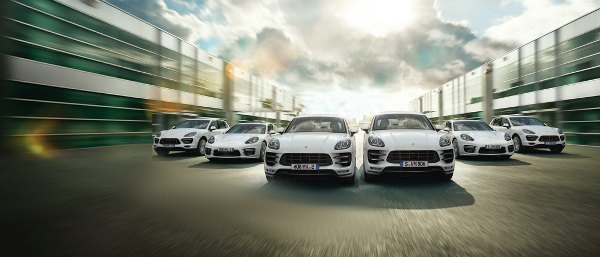












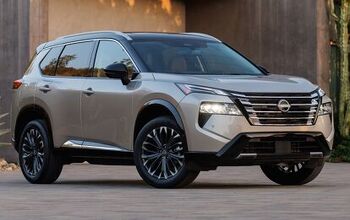

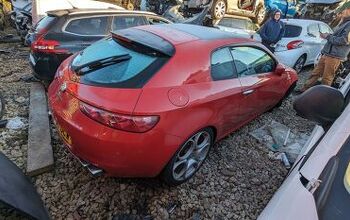
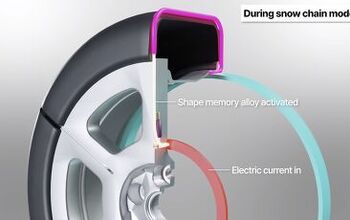
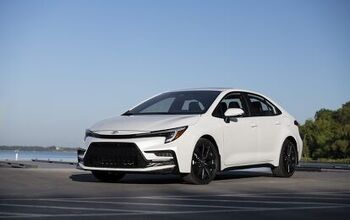
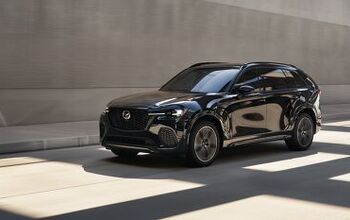

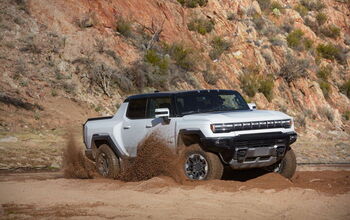

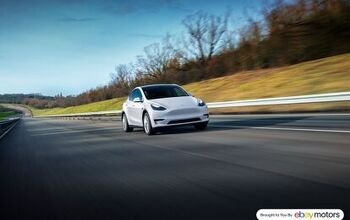
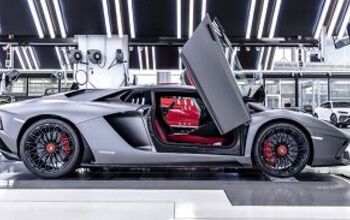


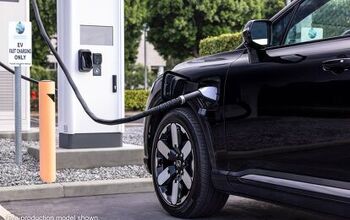
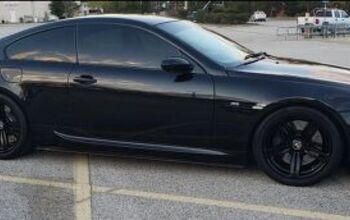
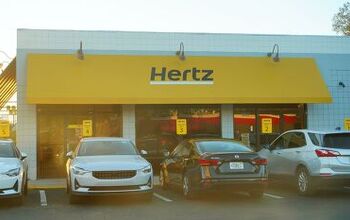
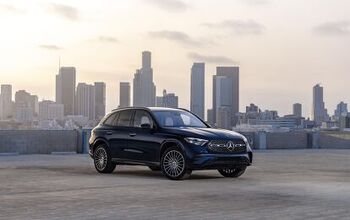
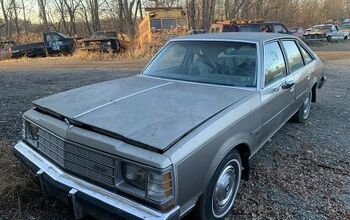
Comments
Join the conversation
Geez, The writer of this article needs to get a girlfriend , or a dog , or something. Maybe get into Politics , since a good portion of this read like filler.
DAMN GOOD WRITING!